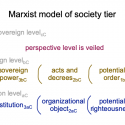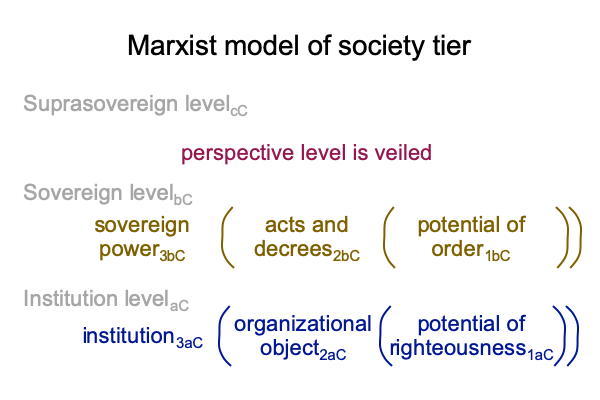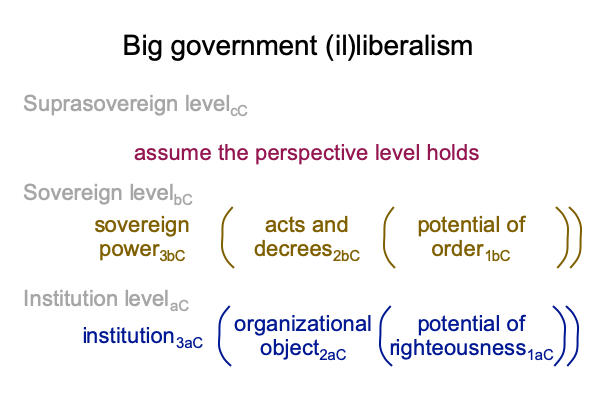Looking at Karatzogianni and Robinson’s Article (2017) “Schizorevolutions Versus Microfascisms” (Part 1 of 4)
0001 Last month, the Razie Mah blog presented the end of Comments on David Graeber and David Wengrow’s Book (2021) “The Dawn of Everything” (available at smashwords and other e-book venues). The blog is titled Looking at Graeber and Wengrow’s Chapter (2021) “The State Has No Origins”.
The question arises, “Does the weird confounded diagram developed in this commentary have relevance to other inquiries covering the human condition in our current Lebenswelt?”
0002 This blog offers an answer, by way of example.
Three years before the conjunction of Saturn and Jupiter in the constellation of Aquarius, Athina Karatzogianni and Andrew Robinson publish an article in the Journal of International Political Theory (2017, Vol. 13(3) 282-295). The British scholars are experts in communication and sociology. Thier article investigates the role of anarchy… er, “anarchy”… in state securitization.
0003 The weird and confounded diagram that appears in the commentary on Graeber and Wengrow’s book looks like this.

The goal of this blog is to briefly review Karatzogianni and Robinson’s article and to demonstrate that a derivation of this figure maps onto the topic.
0004 What is this article about?
The full title is Schizorevolutions versus Microfascisms: The fear of anarchy in state securitisation. Needless to say, the terms are specialized descriptors. But of what?
0005 According to the above figure, academics may confound the state2b with sovereign acts and decrees2bC. The “state”2b is defined. What is defintion? Definition3 is the normal context bringing the actuality of a spoken word2 into relation with the potential of meaning, presence and message1.
The state2b‘ is a term arising from the presence of domination1b‘. But, domination2a must also be defined. The term, “domination”2a, emerges from (and situates) the possibilities inherent in the sole legitimate use of violence (similar to presence)1a’, the administration of information (like meaning)1a and the promotion and guidance of charismatic influence(like message)1a. I call policing, bureaucracy and maintaining reputation, “the three imperatives1a“. The three imperatives1a underlie domination2a.
0006 Here is a picture of the way that Graeber and Wengrow define “state”. This is the path of definition (P).

0007 The way of differentiation is developed in the chapter on presence in Razie Mah’s masterwork, How To Define The Word “Religion” (available at smashwords and other e-book venues). Even though the differentiation of an originary, undifferentiated, social world follows the logic of Peirce’s categories, the process is also historic. Since the start of our current Lebenswelt, the societyC, organizationB and individuals in communityA have historically differentiated into three tiers of interscopes. As a result, realization of the two types of religion, corresponding to organizational objects2aC and a relational object2cC, follows the logic of the differentiation of category-based nested forms and occurs in history.
Here is a picture of the three-level interscope for the societyC tier. This is the path of differentiation (Q).

0008 Needless to say, neither Graeber and Wengrow nor Karatzogioanni and Robinson are aware of the the path of differentiation. So, they are not aware that they confound P and Q.
For example, in the introduction, the latter authors suggest that the securitisation discourse (the administration of information, P21a) by the state2b’ arises from the perception of “new threats” (charismatic influence outside of state supervision, P31a) and attempts to fix network flows (through violence, P11a). This also means that the normal context of sovereign power3bC brings the actuality of sovereign acts and decrees2bC into relation with the potential for ‘order’1bC. However, now sovereign power2bC is confounded with definition3b. The state2b is mixed up with sovereign acts and decrees2bC. Plus, ‘domination’1b is entangled with ‘order’1bC.
0009 Here is a picture of how the confounding seems to play out.

0010 Karatzogianni and Robinson immediately go on to say that their argument is based on a distinction between states and networks. Furthermore networks divide into two forms, such as affinity-active and non-affiliating-reactive, as well as between schizoid (non-affiliating active) and paranoic (non-affiliating reactive). Then, they discuss the ramifications in detail.
To me, the distinction between the state2b and its domination2a of organizational objectives2aC of insitutions3aCredefines3b institutions3aC as networks3a. Order1bC melds with efforts to control the content level1b. While “order” sounds legitimate. “Control” does not.
Order1bC establishes peace among instituions3aC working2aC independently based on their own righteousness1aC. Plus, that righteousness1aC does not pay tribute to the perspective level actuality2bC of fear.
Control1b envisions threats emanating from the open space of active desire1aC and aims to moderate these through domination2a (using P1, P2 and P3 of the three imperatives underlying the definition3a of domination2a). Consequently, attempts2b to supervise2b and narrow the space1b of righteousness1aC, sanction2b and outlaw2b objectsorg2aC, and wage war2b on institutions3aC that do not conform to state2b control1b expand into the fabric of everyday life.
0011 The state’s2b acts and decrees2bC are not oriented to protecting civilians or non-state actors. So, the normal context is not sovereignty3bC, but a defining power3b (responsible to a higher loyalty2cC, so to speak). Yet, this defining power3bspeaks the language of sovereignty3bC, just as Graeber and Wengrow do.
0012 But, who is doing the defining here?
Look at the perspective-level actuality2cC.
Fear2cC is not an emotion. Fear2cC is a demiurge, a relational object, an object that brings everyone into relation.
Fear2cC defines3b the securitisation state2b.










